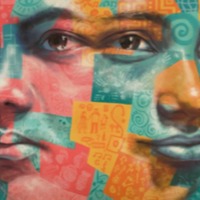
UR
There are an estimated 10,000 people living in modern slavery in Hong Kong (GSI 2018). Approximately 370,000 foreign domestic workers, primarily from Indonesia and the Philippines, work in Hong Kong; some become victims of forced labour in the private homes in which they are employed. An NGO report released in 2016 estimated as many as one in six foreign domestic workers is a victim of labour exploitation. Employment agencies often charge job placement fees in excess of legal limits, and sometimes withhold identity documents, which may lead to situations of debt bondage of workers in Hong Kong. The accumulated debts sometimes amount to a significant portion of the worker’s first year salary. Some employers or employment agencies illegally withhold passports, employment contracts, or other possessions until the debt is paid. Some workers are required to work up to 17 hours per day, experience verbal, sexual or physical abuse in the home, and/or are not granted a legally required weekly day off. UR, a 40-year-old woman trafficked from Jombang to Hong Kong (2010- ), noticed that the signature on her contract had been falsified:
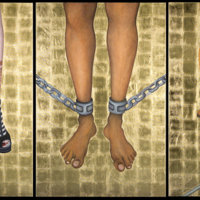
House Slave - Field Slave: A Portrait of Contemporary Slavery
'House Slave - Field Slave: A Portrait of Contemporary Slavery' was created in 2007 by Nicola Green in collaboration with Anti-Slavery International and first exhibited at Dulwich Picture Gallery. The artwork explored the concept of contemporary slavery and the stories of those still enslaved. The exhibition consisted of a large 'altarpiece' scale triptych set alongside artefacts of contemporary slavery from the International Slavery Museum and photos and text from Anti-Slavery International. It was later exhibited as part of Haringey's Black History Month at Bruce Castle Museum in 2010. The triptych is now in the permanent collection at the International Slavery Museum in Liverpool. Workshops were held at Dulwich Picture Gallery, The Prince’s Drawing Clubs, and International Slavery Museum in which students developed their skills in reading a work of art as a narrative, and responded by creating artworks that told their own personal story.
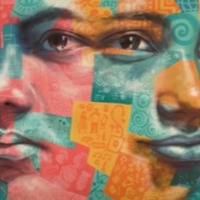
Mitos
The United Kingdom remains a significant destination and, to a lesser extent, transit country for women, men and children trafficked for the purposes of forced labour and commercial sexual exploitation. Migrant workers are trafficked to the UK for forced labour in agriculture, construction, food processing and domestic servitude. The UK National Crime Agency estimates 3,309 potential victims of human trafficking came into contact with the State or an NGO in 2014. The latest government statistics derived from the UK National Referral Mechanism in 2014 reveal 2,340 potential victims of trafficking from 96 countries of origin, of whom 61 percent were female and 29 percent were children. Of those identified through the NRM, the majority were adults classified as victims of sexual exploitation followed by adults exploited in the domestic service sector and other types of labour exploitation. The largest proportion of victims was from Albania, followed by Nigeria, Vietnam, Romania and Slovakia. Mitos travelled from the Philippines to work as a maid abroad. Her employers took her passport and refused to allow her to leave, forcing her to travel to the UK. Upon arrival Mitos was forced to be at her employers call 24 hours a day, often working on only 2 hours sleep. She was verbally abused and prevented from leaving the house at any time. Mitos lived like this for 3 years before she was able to escape.
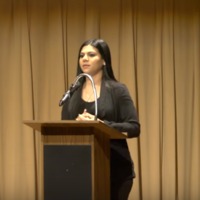
Shyima
Egypt is a source, transit and destination country for women and children trafficked for the purposes of forced labour and sexual exploitation. Egyptian children are recruited for domestic and agricultural labour with some of these children facing conditions indicative of involuntary servitude such as restrictions on movement, non-payment of wages, threats and physical or sexual abuse. Families in remote villages across Africa send their children to work in cities for extra money, a custom that has led to the spread of trafficking as wealthy Africans accustomed to employing children immigrate to the US. It is estimated that 10 000 forced labourers in the US are trapped in domestic servitude. Shyima was just 8 years old when her family sold her into slavery to settle a debt. She was then smuggled into the US and held as a domestic slave in California. She was denied medical care, proper nutrition, an education, and her childhood
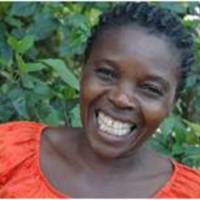
Helia (Narrative 1)
Helia Lajeunesse is part of a women’s group, Limye Lavi, which works to end the institution of restavec in Haiti. Restavèk is a traditional system in which Haitian children from homes suffering economic and social difficulties are sent by parents to live with other families and work for them as domestic servants. There is a perception that the child will be enrolled in school by the host household and treated like one of the family, but often the reality is completely different. For many children, the day is filled with work. Lajeunesse’s own children were put into restavec fosterage when they were young, but with the help of Limye Lavi, her children are now free as well.
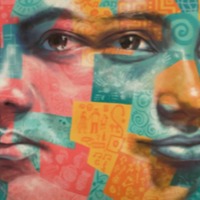
Abuk K.
Thousands of women and children were taken into slavery during the decades of Sudan’s civil war, mainly from Northern Bahr El Ghazal and the Nuba Mountains. Slave-taking was revived in 1985 by the National Islamic government of Sudan primarily as a weapon against counterinsurgents in the South, and secondarily a way to reimburse its surrogate soldiers for neutralizing this threat. In 1989 the government created the Popular Defense Forces (PDF), militia trained to raid villages and take people as slaves. PDF recruits were allowed to keep whoever they captured, along with booty of grain and cattle. One study documents 12,000 abductions by name, while NGOs offer estimates ranging from 15,000 to 200,000. The slaves were often moved to large towns in the north on week-long journeys during which the women were repeatedly raped, and then sold to new masters who used them without pay for farming and sexual services.
The peace process brought these PDF abductions to an end, but inter-tribal abductions continue in Southern Sudan. In addition, Sudanese children are used by rebel groups in the ongoing conflict in Darfur; Sudanese boys from the country’s eastern Rashaida tribe continue to be trafficked to the Middle East for use as camel jockeys; the rebel organization “Lord’s Resistance Army” has forcibly conscripted children in Southern Sudan for use as combatants in its war against Uganda; and the institution of chattel slavery continues in southern Darfur and southern Kordofan.
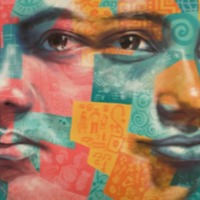
Abirami
Without parents to care for her, Abirami was forced to live at a relative’s house from a young age, where she suffered abuse and was later prevented from attending school so she could perform domestic duties for the family. She ran away to become a child soldier in Sri Lanka at the age of 13. Although Abirami joined the Liberation Tigers of Tamil Eelam (LTTE or Tamil Tigers) movement voluntarily, rather than being abducted like many other children, her recruitment at such a young age is against international law and now considered a war crime. Having now left the LTTE, Abirami discusses the possibilities of what she might do next and struggles to imagine her future.
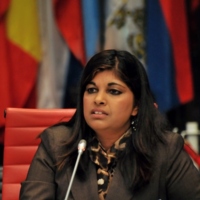
Rani
Rani was taken from her family in India and enslaved when she was seven years old. After a year, her enslaver sold her into illegal adoption. She grew up in the United States. In 1992 she married Trong Hong, a survivor of trafficking in Vietnam, where he had been a child soldier. In 2002, Rani's testimony before the Washington State legislature helped to pass the state's first anti-trafficking legislation. Rani and Trong run the the Tronie Foundation, which supports survivors of human trafficking.
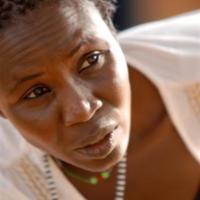
Mende
In 1994, when Mende Nazer was about 12, Arab militia stormed her village in the Nuba Mountains of Sudan. They raped and massacred the villagers and sold Mende and other children into slavery, as part of the Muslim-dominated government’s war strategy against rebels in south Sudan. For about six years Mende was beaten, sexually abused, fed food scraps, and kept prisoner as a domestic slave for a family in the Sudanese capital of Khartoum. At the age of 19 she was taken to London and passed onto the family of a Sudanese diplomat, becoming one of an estimated 6000 women who have been trafficked into Britain in the past few years (mainly from countries in Eastern Europe, Africa and South Asia). Mende’s achievement of a free life after slavery was a highly publicized process. She escaped after several months, in September 2000, and claimed asylum, then suddenly found herself at the center of an international uproar: she published a controversial full-length autobiography in 2002, and the British government rejected her claim in October of the same year. She faced deportation and feared reprisal from the Sudanese government. Human rights and abolitionist groups appealed on her behalf and the Sudanese embassy in Washington DC denounced her as a fraud. In November 2002 the British government announced that it would reconsider her case, eventually granting her asylum and permanent residency. Mende began to spread awareness about slavery in Sudan. Her narrative explains that “the reason for talking out is to help make another slave free,” and in an interview she observed of her decision to tell her story: “They treated me as less than a human being. I’ll only forgive them if all my friends enslaved in Sudan are freed…I want people to know about my past.”
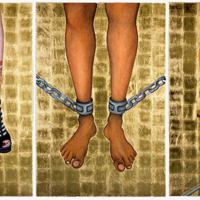
House Slave - Field Slave I and II
'House Slave - Field Slave: A Portrait of Contemporary Slavery' by Nicola Green was first exhibited at the Dulwich Picture Gallery in October 2007. It was then exhibited as part of Haringey's Black History Month at Bruce Castle Museum in October - December 2010. Nicola's triptych is now in the permanent collection at the International Slavery Museum in Liverpool.
Nicola Green's portrait of contemporary slavery 'House Slave - Field Slave' was made for and in collaboration with Anti-Slavery International to commemorate the anniversary of the abolition of the slave trade in 2007. The exhibition consists of a large 'altarpiece' scale triptych with preparatory studies. These are set alongside artefacts of contemporary slavery from the International Slavery Museum in Liverpool and the extraordinary photos and text from Anti-Slavery International, which inspired this work. The painting tells the story of contemporary slavery. There are an estimated 12 million people in the world today who are still enslaved - even though the British slave trade was abolished 200 years ago.
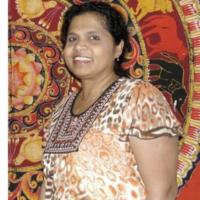
Beatrice A
After several months in slavery, Beatrice Fernando reached the point of no return. Standing on a fourth-floor balcony in Beirut, Lebanon, she realized there was “no other way to get home” but to “dive backwards.” In a recent interview she explained of her decision to step off the balcony: “When we take a step against slavery, the world will take another step.”In 1980, at the age of 23, Beatrice had responded to an advertisement for work as a housemaid in Lebanon. She left her home country of Sri Lanka, intending to send money to her parents and her three-year-old son. But in Beirut she became a domestic slave. She was locked inside a home, starved, beaten, never paid, and forbidden from communicating with the outside world. Guards were instructed to shoot her if she tried to leave. After she reached a turning-point and escaped by jumping from the apartment’s fourth floor, she spent 21 days in a coma. Doctors told her that she was paralyzed. After 14 months in hospital she recovered from the paralysis and returned to Sri Lanka. In 1989 she came to live and work in the US.